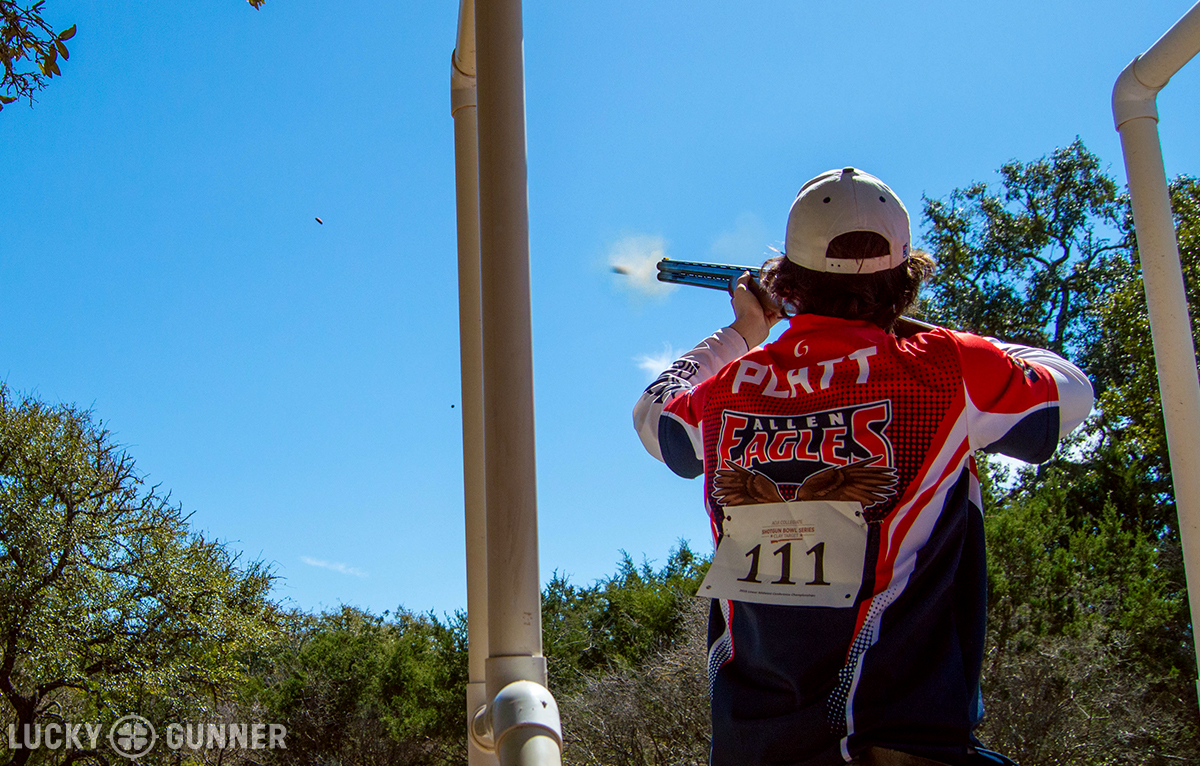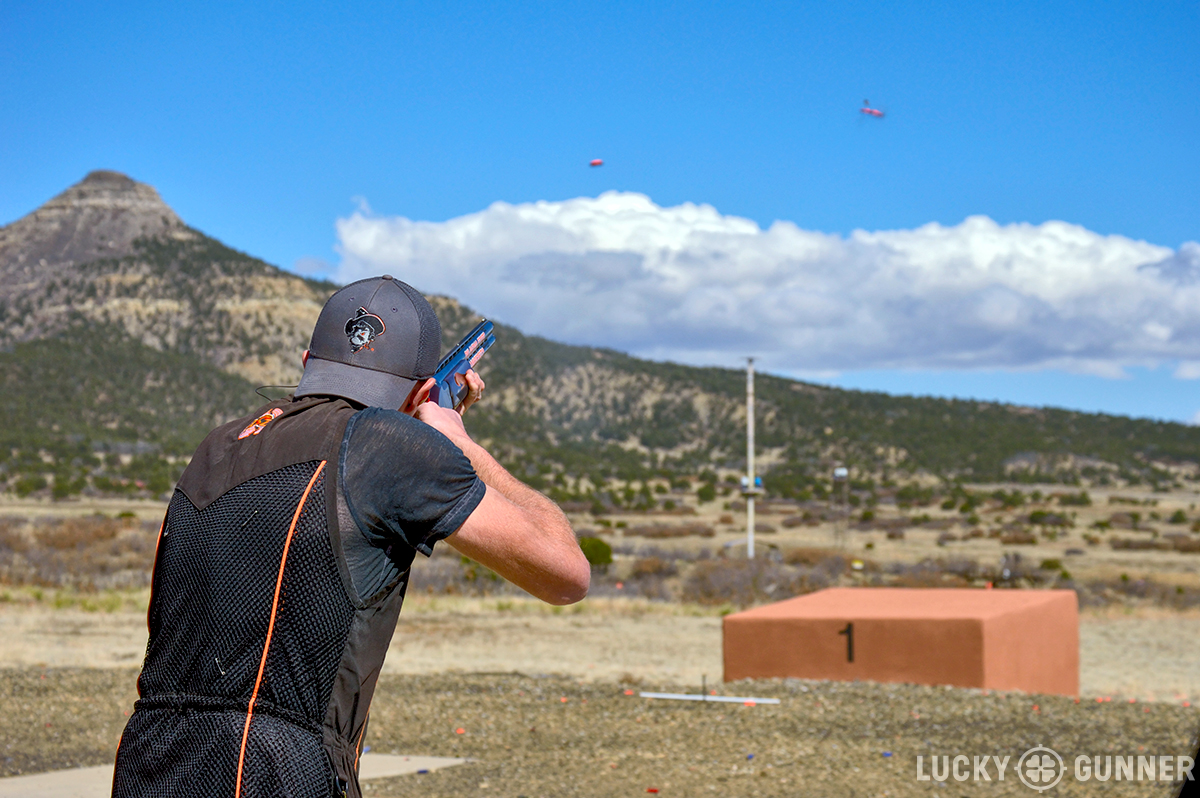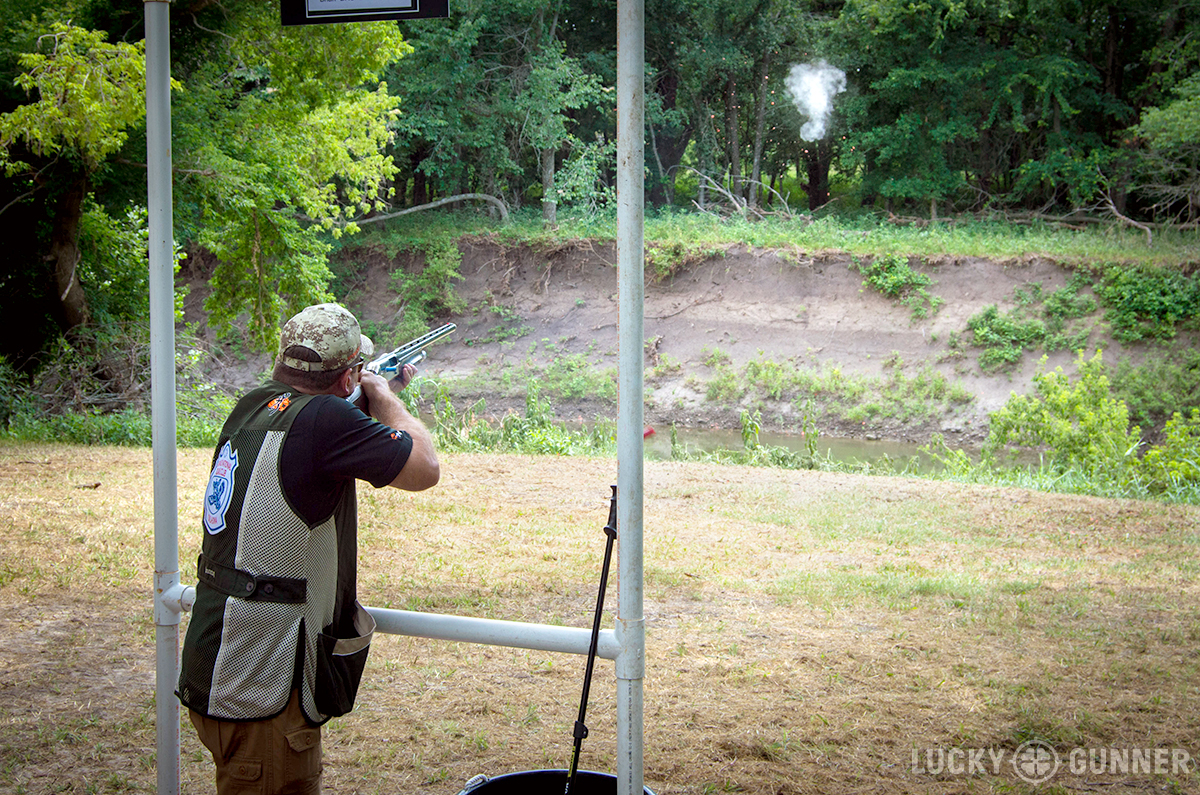If you own a shotgun, there’s a pretty good chance you’ve broken a clay pigeon or two at some point. Heck, even if you don’t own a shotgun, you’ve likely watched as clays were blasted from the sky either at the gun club, on the internet, or even during the recent Olympic Games. Clay shooting sports are some of the most exciting, interesting, and challenging shooting disciplines, but I’ve found there can be some very serious roadblocks preventing newcomers from enjoying everything that they have to offer. As with any sport, it’s hard to know if you want in on it without first knowing what’s involved. To that end, here’s a quick primer on the basics of shotgun games and which one may be best for you.
The Big Three
The vast majority of target shooting done in the U.S. with shotguns involves three main sports: trap, skeet, and sporting clays. While the basic equipment necessary to pursue each sport is the same, each one offers a unique shooting experience and will challenge different aspects of your shotgun technique.
Trap
Trap, specifically American Trap, is typically the easiest shotgun sport to just jump right into, and it is also the sport with perhaps the most devout following. Squads of up to five shooters take turns shooting a single clay thrown randomly within a 45 degree arc from a machine set 16 yards in front of the firing line. Each station puts a shooter at a different position relative to the trap house in order to vary the target presentations. A round of trap is comprised of 5 shots from each of 5 stations for a total of 25 shots. Shooting is also very quick with very little down time between shots. What makes trap accessible to newcomers is the relatively short amount of lead needed for most targets and the fact that only one target is flying at a time. As shooters become familiar with the game, they can branch out to other variations of the sport such as international trap or doubles trap.

While trap is very accessible, the same aspects that make it great for beginners can hinder a shooter’s ability to hit other kinds of targets later on. I’ve often found that regular trap shooters can struggle with the hard crossing targets found on the skeet field and lose focus because they don’t like seeing their scores take that initial hit. Also, at the competitive level, trap is a game where perfection is the status quo. You can expect to see at least one 100/100 at most serious trap competitions which illustrates how trap shooting can become less about making hits and more about avoiding misses. This is a subtle but important distinction for those of us who primarily shoot for pleasure. While it would be foolish to say trap is devoid of real depth and difficulty, it is important to note that it very quickly becomes a test of mental focus and endurance.
Skeet
American skeet is the second most popular clay sport here in the United States, and while the learning curve is steeper than with trap, it offers a much wider variety of target presentations. Skeet takes almost everything about trap and turns it on its head. Squads of shooters take turns firing from one of eight stations before advancing as a group to the next, and instead of using an oscillating machine to vary target angles, shooters change their firing positions. Additionally, instead of just one target thrower, skeet fields have two throwers set at different heights to allow for pairs of targets to be thrown simultaneously. Like with trap, a round of skeet consists of 25 shots, however, skeet incorporates a more complex shooting procedure than trap, which can take several rounds of practice to fully memorize.

Skeet is a well-rounded sport. It has enough target variety to challenge shooters in more ways than trap can, yet manages to retain enough structure to allow shooters to develop useful muscle memory to perfect each station regardless of the particular field they’re shooting on. The problem with skeet is that it can easily burn new shooters by throwing too much at them at once. It’s quite common for new shooters to hit only a few, if any, targets their first round which can be quite frustrating, especially in the presence of someone shooting 20 or more. I definitely recommend skeet to those already familiar with the fundamentals of shotgun shooting. For new shooters, I recommend seeking assistance when starting out, whether from a coach or just by joining in with another squad on the range.
Sporting Clays
Sporting clays is often aptly described as “golf with a shotgun.” Like golf, no sporting clays course is quite the same as any other. There are no restrictions or guidelines as to how targets should be thrown, and even the size and shape of thrown targets can vary. Sporting clays courses can incorporate various obstructions to limit the shooter’s firing window, and changes in the course terrain can drastically impact shooting angle and even target behavior from one shot to the next. Sporting clays courses generally consist of 8-15 stations and require 50-100 shots total to complete. Targets are presented in pairs either simultaneously or by having the second target thrown only after a shot is taken at the first. Sporting clays courses can stretch a mile or more, however, a consolidated variation of sporting clays called “5-stand” can be found as well.

The beauty of sporting clays is that the target variety not only keeps the game from becoming stale, but it also allows the difficulty level to be tailored to a particular crowd. Most ranges will have a course suitable for novice shooters, which makes the game highly accessible no matter your shotgunning background. Unlike trap and skeet, where a miss has you moving onto a totally different target, sporting clays affords multiple attempts at each set of targets allowing for corrections to be made and for fundamental skill to develop. In my years of informal coaching, I’ve found that shooters who develop their skills through shooting sporting clays have no trouble crossing over into other disciplines because they’ve already dealt with similar types of target presentations offered on trap and skeet fields. While the range fees for sporting clays are often much higher than for trap and skeet, it often makes for a much more memorable and exciting experience.
In our modern world of whiz-bang 3-gun and action pistol competitions, it can be pretty easy to overlook clay shooting, but the foundational thrill is really quite the same for them all: the balancing act of tempering raw speed with accuracy. If you’ve never experienced the shotgun sports, I highly recommend seeking out a shotgun club in your area. If you’ve decided to take the plunge, here are a few guns that can get you breaking clays without breaking the bank. Be sure to let us know your shotgun sport of choice in the comments!


Clay target shooting is without a doubt the truest form of primal marksmanship in that one is in the woods attempting to hit a moving target. With the current emphasis on handguns and concealed carry, which is great, more guns less crime, let’s introduce a new generation to this most basic of shooting sports.